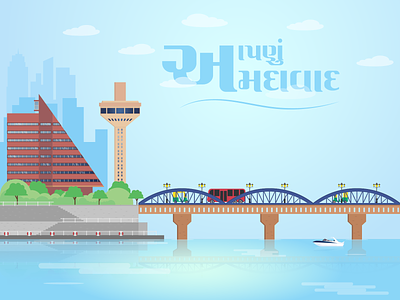
The surprise picks of chief ministers and deputy chief ministers in the three states won by the BJP in the recent Assembly polls shouldn’t come as a surprise. The picks are more strategic than surprise. And the purpose and message go well beyond the respective state’s politics.
To put it straight at the very outset – the BJP’s choice of the three chief ministers is not just limited to caste balance in Madhya Pradesh and Rajasthan or cementing tribal votes in Chhattisgarh.
If winning a state election is a difficult task, picking a chief minister from among several frontrunners is an act of fine balance. The tightrope walk is made tougher when a party hasn’t presented a chief minister face to voters. The BJP didn’t do so in any of the three states it won – Chhattisgarh, Madhya Pradesh and Rajasthan — and, instead, banked on ‘Modi ki Guarantee’.
The BJP, under Prime Minister Narendra Modi, has turned this tough task into an opportunity. And for the party, that was also the need of the hour.
The chief ministers of Chhattisgarh and Madhya Pradesh took oath of office on Thursday and Bhajan Lal Sharma was sworn in as the CM of Rajasthan on Friday.
Some political pundits believe that the BJP, which won 303 of the 543 seats in the 2019 Lok Sabha election, has maxed out. They say it is nigh impossible for the BJP to better that performance without winning a fresh state.
In this scenario, every single seat counts. And a party like the BJP would not like to leave any electoral factor untouched.
The BJP’s participation in competitive caste politics hasn’t been that pronounced. It has used ‘kamandal’ against ‘Mandal’ politics. It has used a combination of Hindutva, development issues and nationalism against caste-based parties.
LIMITING THE YADAV FACTOR IN UP AND BIHAR
However, the BJP successfully attracted Other Backward Classes votes with PM Modi projecting himself as a leader of the OBCs. But Yadavs, a dominant community among the OBCs, have mostly sided with the Samajwadi Party in Uttar Pradesh and the Rashtriya Janata Dal (RJD).
With the surprise pick of Mohan Yadav as the Chief Minister of Madhya Pradeshthe BJP has tried to cement its OBC voter base in the state where the bloc accounts for around 50% of the population. Though this isn’t the first time that the BJP has picked a Yadav CM in Madhya Pradesh, the timing this time is important as the party will try to soften the blow from the Yadavs in UP and Bihar in the 2024 polls.
The BJP’s caste engineering is also on full display with the party picking Jagdish Devda and Rajendra Shukla, a Dalit and a Brahmin, as Deputy Chief Ministers. Narendra Singh Tomar, a former Union minister, a Thakur, has been appointed the Speaker of the Assembly.
CHHATTISGARH’S POLITICS INFLUENCES SEVEN STATES
The choice of a tribal Chief Minister for Chhattisgarh is an absolute masterstroke.
The BJP won 22 of the 26 seats in Chhattisgarh’s tribal belt of Surguja and Bastar, revealing how the tribals massively voted for the saffron party.
Chhattisgarh is like no other state. It shares its border with tribal districts of seven other states. Therefore, what happens in Chhattisgarh, doesn’t stay in Chhattisgarh. With Vishnu Deo Sai now the Chief Minister of Chhattisgarhthe BJP has built upon its projection of tribal empowerment, which started with President Droupadi Murmu moving into the Rashtrapati Bhavan.
There are 47 Lok Sabha seats reserved for the Scheduled Tribes. Forty of them are outside the Northeast states.
Other than getting a tribal leader to head Chhattisgarh, the BJP has also brought in an OBC and a BrahminArun Sao and Vijay Sharma, as deputy Chief Ministers.
BJP’S RAJASTHAN MESSAGE IS LOUD AND CLEAR
In the case of Rajasthan, the selection of Bhajan Lal Sharma, a Brahmingoes beyond trying to soothe the frayed nerves of the community.
Brahmins are said to have been holding some soreness for the party, which they loyally backed for decades. Brahmins are a small community in Rajasthan, but are a sizeable voter base in some of the neighbouring states. But the chief ministerial choice isn’t limited to the caste factor.
Bhajan Lal Sharma, is a first-time MLA, and doesn’t belong to any of the camps in a state that has seen divided loyalties. Nor does anyone belong to Sharma’s camp. His selection is a clear indication by the BJP brass that in-fighting wouldn’t be rewarded and has to be abhorred ahead of the crucial 2024 Lok Sabha election.
This comes after rivalry within the BJP cost it Himachal Pradesh in 2022, handing the Congress its only North Indian state.
While sending the messages across, the BJP has kept caste politics in mind with its Rajasthan deputy chief minister picks. It has got Diya Kumari, a Rajput from an erstwhile royal family in Jaipurand Premchand Bairwa, a Dalit, as Rajasthan deputy Chief Ministers.
In the three states, the BJP has a tribal, a Yadav and a Brahmin as chief ministers. It has two Brahmins, two Dalits, an OBC and Rajput as deputy chief ministers.
The BJP, which has always tried to counter caste politics with the poll planks of Hindutva, development and nationalism, has resorted to a fine act of caste balancing.
What is interesting to note is that it has taken into account the impact of its choices beyond the respective state boundaries and sending out strong messages. How these messages become the medium of change for it and whether they translate into votes in the 2024 Lok Sabha polls is to be seen.





